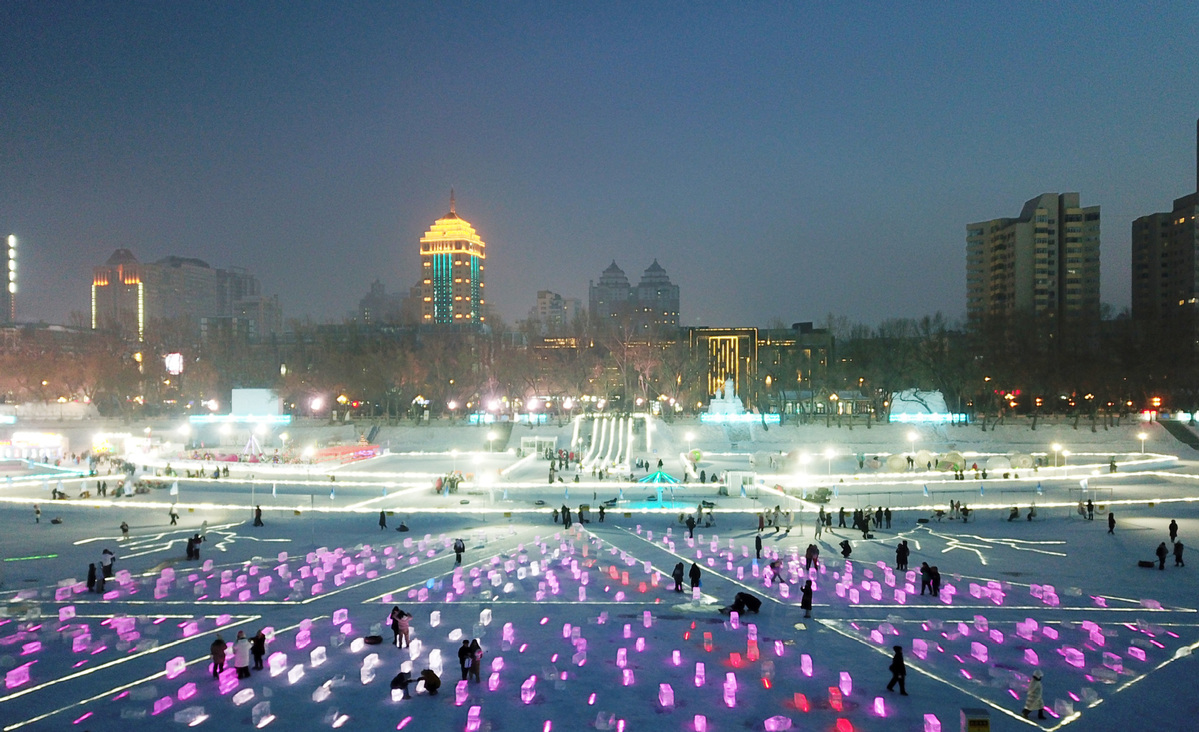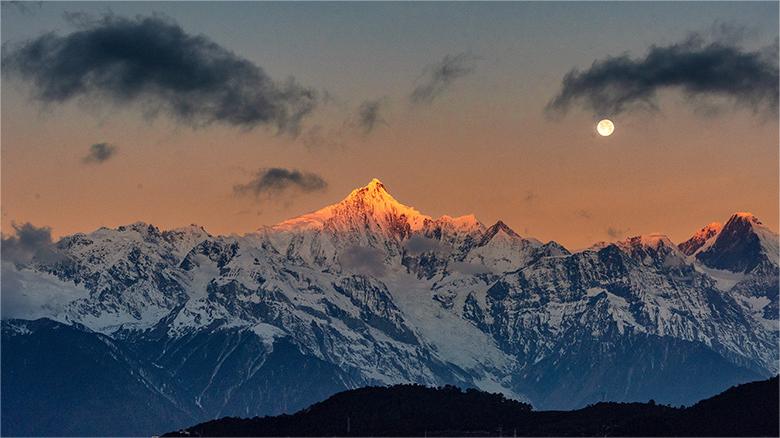Harbin's tourism boom flash in social media pan

This aerial photo taken on Jan 3, 2024 shows tourists having fun at Harbin Songhua River Ice and Snow Carnival in Harbin, Northeast China's Heilongjiang province. [Photo/Xinhua]
To boost the city's post-pandemic economic recovery, the government of Harbin, capital of Northeast China's Heilongjiang province, has made special efforts to take advantage of the winter months to attract visitors from the south of the country. During the three-day New Year's Day holiday from Dec 30 to Jan 1, the city received 3.05 million visits, with the revenue from tourism reaching 5.91 billion yuan ($828 million), both historical records.
It is worth mentioning that the city authorities have promptly and effectively addressed complaints of tourists about the organization and services of Harbin Ice-Snow World, the largest theme park of its kind in the world, and overcharging by local restaurants, which is regarded as being successful crisis management. Harbin's swift response to the complaints gave people a good impression of the city.
Moreover, it has also taken the initiative to provide thoughtful services to tourists. For instance many free warm and cozy rest stations have been set up at its major tourist attractions, which have proved popular with tourists, especially those not fully prepared for the bitter-cold reality of the fairy tale world of snow and ice.
As such, thanks to the snowball effect of social media, Harbin appears to have become the most popular tourist destination in the country in a short space of time, overshadowing such subtropical winter resorts as Sanya in Hainan island. That seems to have stirred the long-dormant pride of the more than 9 million residents in Harbin, which was once seen as a key hub of Northeast Asia.
While many have marveled at the growth potential Harbin has demonstrated in a short time, saying that they see hope for the revitalization of the country's largest Rust Belt in Northeast China, a strategy the central government has carried out for about 20 years, it must be pointed out, as the short-lived tourism boom of Zibo, Shandong province, following largely the same path last summer indicates, what Harbin has reaped is nothing but a flash-in-the-pan moment of popularity created by social media attention.
Over the past 20 years, Harbin's population has contracted by about 2 million, and the city, which was once one of the top 10 city economies in the country, now ranks lower than 50th, and it shows no sign of regaining that higher status. Its withering economy is dominated by State-owned enterprises, whose technology and management lag behind the market demand. The depletion of oil and coal in adjacent regions has also contributed to its economy running out of steam.
Once Harbin's fast-gained appeal fades away, a major challenge confronting the local government remains how to improve the city's business environment to attract investment and boost the growth of private enterprises, breathe life back into its huge SOE system, and enhance its own performance.
Photos
Related Stories
- International snow sculpture competition held in Harbin
- Event promoting Hezhe culture held in Harbin
- China's "ice city" sees tourism boom
- 16th int'l snow sculpture competition for college students held in Harbin
- 'Ice City' sees tourism boom during New Year holiday
- Winter tourists flock to China's ice city
- Disney's 'Frozen' in real-life stuns visitors in Harbin
- International ice sculpture competition concludes in Harbin
- Tourists have fun at Harbin Songhua River Ice and Snow Carnival
- China's "ice city" Harbin sees tourism boom during New Year holiday
Copyright © 2024 People's Daily Online. All Rights Reserved.









